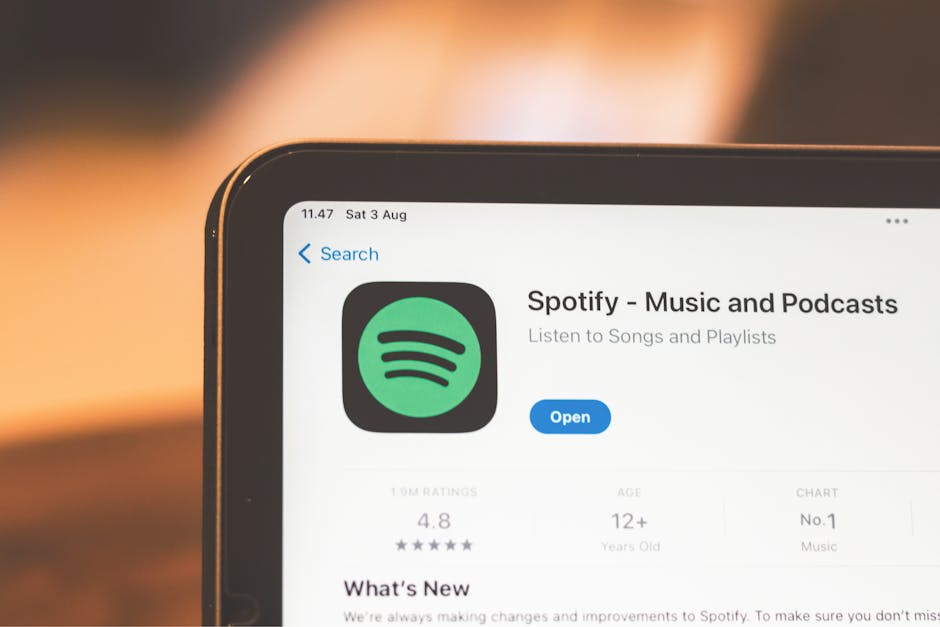Overview: A Fast-Moving Landscape
The media world doesn’t sit still—and this month was no exception. From platform overhauls to shifting consumer habits, the pace of change continues to accelerate. Understanding these moves isn’t just helpful—it’s essential.
What Changed This Month
Here’s a quick rundown of notable developments:
- Major streaming platforms restructured subscription tiers and released new ad-supported models
- Several traditional broadcasters finalized deals to consolidate assets or pivot toward digital-first strategies
- Social platforms rolled out new monetization tools for creators and algorithm updates that shift visibility dynamics
- Print and legacy news organizations experimented with AI tools for faster, more scalable content production
Forces Driving Industry Transformation
What’s fueling all this movement? A few key drivers:
- Consumer Behavior: Audiences expect faster, more personalized content and seamless experiences across devices
- Tech Innovation: AI, automation, and smarter analytics are influencing how media is created, distributed, and monetized
- Economic Pressure: Platforms and publishers are adjusting strategy amid tighter ad markets and rising costs of content production
- Regulatory Scrutiny: Governments worldwide are drafting new policies that affect media ownership, AI transparency, and digital privacy
Why It Matters for Media Pros and Content Creators
Whether you’re behind the camera, writing scripts, managing distribution, or building partnerships—the pace of media evolution shapes your work:
- Stay Competitive: Knowing the latest shifts helps you adapt your strategy before your audience or clients move on
- Spot New Opportunities: Trends often create white space for innovative formats, partnerships, or products
- Navigate Risk: Staying informed reduces the chance of making outdated or misaligned business decisions
In a media landscape moving as fast as this one, adaptability isn’t optional—it’s a core advantage.
Broadcast Media: Consolidation and Strategic Shifts
The broadcast media landscape continues to undergo dramatic change as legacy players restructure and reposition for the digital era. This month has seen a wave of strategic moves designed to safeguard market relevance and align with evolving viewer behavior.
Key Mergers, Acquisitions, and Divestitures
Major media conglomerates are shuffling their portfolios to optimize for scale and specialization.
- Merger activity: Several regional broadcasters have merged to streamline operations and expand their digital offerings.
- Acquisitions: A handful of streaming services have acquired traditional TV assets, signaling a push to own both distribution and content production.
- Divestitures: Underperforming or non-core assets are being sold off as companies refocus on high-growth platforms.
These moves reflect a broader industry trend: consolidation for strategic agility and cost efficiency.
Networks Betting Big on Streaming
National broadcast networks are increasingly blurring the line between linear and digital. Rather than resisting the streaming shift, many are investing heavily to compete head-to-head with born-digital brands.
- Launch and expansion of branded streaming platforms
- Simulcasting traditional programming on digital channels
- Shifting prime content—including sports and scripted series—to streaming-first premieres
These efforts point to a future where streaming isn’t a secondary channel, but the core distribution strategy.
Local News Goes Digital-First
Local news stations, once reliant on set broadcast times and in-person coverage, are pivoting quickly to meet viewers where they are: online and on-demand.
- Growing use of social media platforms for breaking news and community engagement
- Investment in mobile-optimized content, including vertical video and live updates
- Integration of viewer-submitted content and interactive segments to boost relevance
What’s emerging is a new model of hyperlocal journalism—faster, more accessible, and increasingly digital-native.
Streaming Continues to Disrupt
The streaming wars aren’t cooling off—they’re getting more crowded. In just the past quarter, at least three new platforms have launched or announced major expansions, all banking on the same bet: there’s still room to win subscribers. Whether that’s true remains to be seen. The battleground has shifted from just “more content” to better retention. Subscriber churn is now the metric everyone’s watching. Signing people up is easy. Keeping them when the free trial ends, not so much.
Big players are luring audiences with exclusive licensing deals. Think legacy networks rolling out streaming-only reboots or indie creators locking in multi-show contracts. The aim is to corner niche fandoms and keep them renewing month after month. It’s not just about blockbusters anymore—it’s about cult hits, back catalogs, and highly specific originals.
Meanwhile, viewers are savvier. They expect customization, low-friction browsing, and no filler. The old model of dumping an entire season at once? That’s not always the go-to anymore. Weekly releases that build community and buzz are seeing a comeback. In 2024, platforms have to be more than just pipes—they need to feel curated, responsive, and sticky.
Audio Media: Growth Beyond Music
The audio media landscape continues to evolve rapidly—and in 2024, it’s extending far beyond playlists and music streaming. This month saw notable developments that underline the rise of spoken-word content and how platforms are positioning themselves to monetize it.
Surge in Talk-Based Audio
Listeners are increasingly turning to audio for more than just entertainment. There’s been a noticeable uptick in interest across several categories:
- News and daily briefings: Quick, digestible updates for on-the-go audiences
- Commentary and analysis: Topical discussions from independent voices and niche experts
- Educational content: Language learning, history deep-dives, personal development, and more
This shift signals a desire for depth and context, even in easily consumable formats.
Original Podcasts as Strategic Assets
Major streaming platforms are doubling down on exclusive audio offerings. With branding, loyalty, and retention in mind:
- Spotify, Amazon Music, and Apple Podcasts continue to invest in original shows
- Talent deals and in-house production studios are expanding
- Niche and regional content is being prioritized for broader audience reach
These originals help platforms carve out identity and create defensible content ecosystems.
Monetization Takes Center Stage
With so many podcasts now vying for listener attention, monetizing effectively is a priority. We’re seeing the rise of:
- Subscription-based access to premium episodes and ad-free listening
- Dynamic ad insertion for targeted advertising opportunities
- Branded content partnerships between creators and advertisers
Independent podcasters are also experimenting with direct support via Patreon, merchandise, and live events.
Related read: The Rise of Podcasts and Their Role in Modern Media
One thing is clear: talk-based audio is no longer a sideline in digital media—it’s quickly becoming a pillar.
News Media on the Defensive
Trust Issues and Political Influence
Public trust in news media continues to erode, especially in politically charged environments. Mainstream outlets face increasing scrutiny over perceived bias, editorial oversight, and ownership agendas. This loss of trust has serious implications:
- Readers are becoming more selective about their news sources
- Social platforms act as double-edged swords—amplifying headlines, but also fueling misinformation
- Politically polarized content continues to deepen audience division
Paywalls: Gaining or Losing Ground?
Newsrooms that once offered unlimited free access are now turning to paywalls in an effort to sustain revenue. However, results are mixed:
- High-converting publishers: Established outlets with strong brand loyalty, exclusive journalism, or niche expertise see steady subscription growth
- Struggling adopters: Small or mid-size media organizations often can’t justify the cost barrier to broader audiences
- Hybrid models: Freemium approaches—free articles with paid premium content—are becoming more common
AI-Generated Content Raises Red Flags
With the rise of generative AI, some newsrooms are experimenting with automation to optimize workflows. While it offers efficiency, the risks are growing:
- Potential for misinformation or lack of nuance in reporting
- Concerns around job displacement for journalists
- Guidelines and transparency measures are still evolving
Some organizations are drafting in-house ethical frameworks to manage AI use, while others remain skeptical of its role in real journalism.
Independent Outlets Are Gaining Ground
As trust in traditional media wavers, independent outlets—both digital-first and newsletter-based—are gaining loyal followings. Their strengths lie in:
- Offering unfiltered analysis and specialized insight
- Building direct relationships with readers via memberships or donations
- Operating with more flexibility outside of corporate ownership structures
This shift presents new competition for legacy players and reflects a growing appetite for authenticity in news delivery.
Social Platforms & Creator Economy
The ground under social platforms is shifting—again. This time, algorithms are clamping down on passive reach and prioritizing what feels native, current, and interaction-driving. For news and content discovery, that means fewer headlines getting traction via reposts and more surface area going to creators who build engagement thread by thread. Gatekeeping has changed forms: it’s now coded into platform logic.
Short-form video still runs the show across major networks. The formats may feel overdone, but snackable clips remain unmatched for reach. That said, creators cashing in are those who turn 60 seconds into a meaningful loop—news analysis, personal storytelling, or micro-education with a hook. Virality without meaning isn’t sticky anymore.
Meanwhile, creator incentives are in flux. Monetization isn’t just about ad share or tips. Platforms are testing rewards tied to watch time, comment engagement, and even subscriber retention. The metrics are getting more nuanced, and the smart creators are watching how the rules evolve.
Brands are playing a longer game, too. Instead of quick sponsored plugs, companies are building relationships—with multi-month collabs, behind-the-scenes access, and co-created content that feels fluid, not forced. It’s no longer about reach alone. It’s about trust and aligned values. The creators thriving in this shift aren’t just influencers—they’re partners.
Advertising & Revenue Models
The ad landscape in 2024 is tougher and leaner. Budgets haven’t disappeared—they’ve just been reallocated. Brands are thinking smaller, smarter, and more deliberately. High-spend splash campaigns are being replaced with targeted initiatives that emphasize measurable returns. For media outlets and creators alike, that means every impression has to justify its existence.
Contextual advertising is seeing a quiet resurgence. Instead of relying solely on invasive tracking, advertisers are looking at content relevance: matching ads to the themes of videos, podcasts, or articles. It’s an old idea that feels new again in a post-cookie world. The upside? It’s more respectful of user privacy and often delivers better engagement.
Meanwhile, subscription models are also getting more complex. Bundles are in—streaming platforms, news outlets, and even creators are experimenting with premium tiers, bonus content, or access to exclusive communities. Consumers aren’t necessarily paying more, but they’re paying smarter—for content that feels curated, frictionless, and valuable.
All of this unfolds as ethical friction over data use grows. Regulators are circling, audiences are more aware, and publishers are getting squeezed between personalization and privacy. For creators and media outfits alike, the message is clear: Know your audience, respect their boundaries, and don’t assume attention is yours to keep.
Regulatory Watch
Policymakers aren’t sitting on the sidelines anymore. Around the globe, governments are rolling out new rules aimed at tightening control over how data is collected, who owns media, and how AI is used in content creation and distribution. These aren’t abstract concerns—they’re changing how platforms operate and what creators can legally publish or monetize.
In the U.S., the FTC and Congress are eyeing tighter guardrails on AI transparency, especially around labeling synthetic media. Europe, as usual, is moving faster, with fresh enforcement of the Digital Services Act affecting how misinformation is detected and removed. Meanwhile, several Asian countries are introducing stricter ownership regulations, putting foreign-operated media under increasing scrutiny.
For creators and media businesses, this means get your house in order. Understand where your data comes from, how your algorithms work, and what your audience sees. Don’t assume your platform will give you a heads-up. Get ahead of this. Because compliance isn’t optional—it’s the new cost of staying in the game.
Looking Ahead
Expect fragmentation to stay front and center. New mini-platforms and apps are bubbling under the surface, each offering niche communities a slightly tweaked user experience. Watch for a few dark-horse players to break through the noise—not by going big, but by going specific.
On the streaming front, signals suggest another round of licensing reshuffles. Smaller studios are clawing back content rights, trying to cash in on the bidding wars. That means more shows jumping platforms almost overnight, and viewers rethinking where they subscribe.
In the creator space, transparency policies are tightening. Early drafts of influencer regulation laws are circulating in multiple countries. Brands and creators that build systems now—disclosures, clear sponsorship labeling, usage rights—will have a smoother ride later.
Also: keep tabs on AI integration hitting mainstream production workflows. A few broadcasters are already experimenting with AI anchors and synthetic voices. This won’t replace humans anytime soon—but the ones who adapt and blend tech with authenticity will outlast the rest.
The bottom line? Don’t chase volume. Don’t chase headlines. Keep your radar sharp, adapt responsibly, and double down on what actually builds trust. Being loud won’t win. Being ready will.



